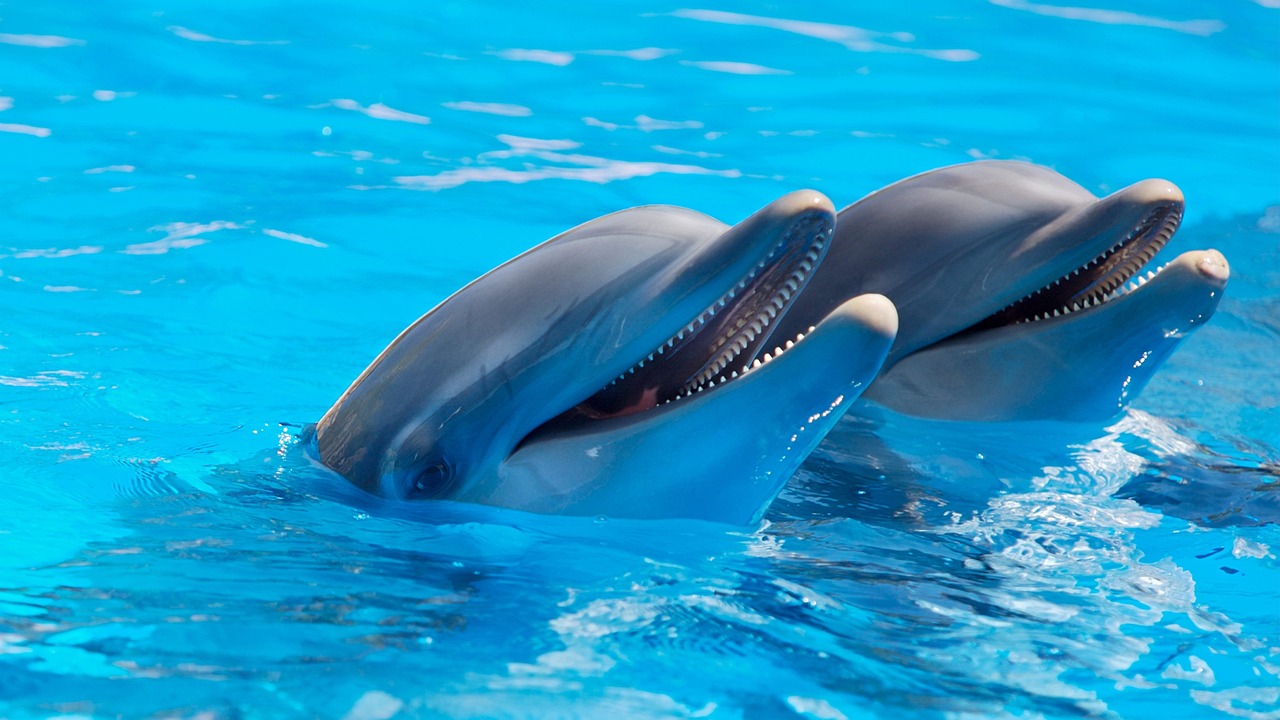Dolphins are highly intelligent marine mammals that are found in all oceans of the world. They are known for their playful behavior and their ability to communicate with each other.
Table of Contents
Scientific Name
The scientific name for dolphins is Delphinidae. This name comes from the Greek word delphinos, which means “dolphin”.
Types of Dolphins
There are over 40 different species of dolphins. Some of the most common species include:
- Bottlenose dolphins
- Orcas (killer whales)
- Common dolphins
- Spinner dolphins
- River dolphins
Behavior and Sociability
Dolphins are highly social creatures, often swimming in groups known as pods. These pods can range in size from just a few individuals to hundreds, depending on the species and location. Their social structure is intricate, and they display cooperation, communication, and even playfulness within their groups.
Habitat and Distribution
Dolphins are found in oceans and seas worldwide, inhabiting both temperate and tropical waters. They prefer coastal areas, where food is plentiful and shelter is accessible. Some species, like the bottlenose dolphin, can also adapt to life in captivity and are commonly seen in marine parks and aquariums.
Diet and Feeding Habits
Dolphins are carnivorous predators that primarily feed on fish and squid. They use their keen echolocation abilities to locate prey, emitting sound waves and listening for the echoes that bounce back from objects in the water. This unique sensory adaptation allows them to hunt effectively even in murky waters.
Communication and Vocalizations
Dolphins are known for their sophisticated communication skills and use a combination of clicks, whistles, and body language to convey information and emotions to one another. Scientists believe that different dolphin species have distinct dialects, enhancing their communication within their pods.
Predators and Threats
Adult dolphins have few natural predators in the wild, as their size and intelligence effectively defend against most threats. However, young dolphins may fall victim to sharks and other large marine predators. The biggest threats to dolphins today are human-related, including pollution, habitat destruction, entanglement in fishing gear, and collisions with boats.
Reproduction and Calving
Female dolphins have a unique reproductive cycle, tied to food availability and other environmental factors. After a gestation period of about 9 to 17 months, female dolphins give birth to a single calf, which they nurse and care for attentively. The mother-calf bond is strong, and calves may stay with their mothers for several years before becoming independent.
Conservation and Protection
Conserving dolphins and their marine habitats is essential for the health of the oceans and the balance of marine ecosystems. Numerous organizations and governments are working to protect dolphins through various conservation initiatives, including the establishment of marine protected areas and regulations to reduce human impact on dolphin populations.
FAQs
Q: Are dolphins considered whales?
A: Yes, they are a type of whale, belonging to the family Delphinidae within the larger order Cetacea.
Q: Do dolphins sleep?
A: Yes, but their sleep patterns are different from those of humans. They rest one hemisphere of their brain at a time, allowing them to stay alert to potential threats while resting.
Q: Can dolphins recognize themselves in mirrors?
A: Some studies suggest that dolphins may have self-awareness and can recognize themselves in mirrors, which is a sign of cognitive sophistication.
Q: Are dolphins used in military operations?
A: Yes, some militaries have trained dolphins for tasks such as locating underwater mines and other specialized missions.
Q: Are dolphins protected by international law?
A: Dolphins are protected under various international agreements and conventions, such as the Marine Mammal Protection Act in the United States and the Convention on the Conservation of Migratory Species of Wild Animals.
Conclusion
Dolphins are extraordinary marine mammals that continue to amaze and inspire people around the world. Their intelligence, sociability, and agility in the water make them truly captivating creatures. As we strive to understand and protect these playful wonders of the ocean, we ensure that future generations can continue to marvel at the beauty and brilliance of these majestic marine mammals.
